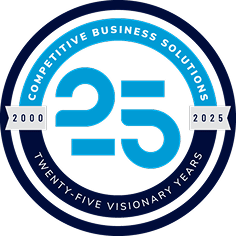
Strategies for Building Culture in a Virtual Environment
The COVID-19 pandemic reshaped how we work, challenging organizations to adapt quickly to a virtual work environment. Before the pandemic, many companies had remote work policies in place, but they were often less formal and more focused on occasional telecommuting. When the world went remote overnight, it exposed a fundamental challenge: building and maintaining a strong organizational culture in a virtual environment. Here are some strategies you as a leader can employ to foster a sense of culture and belonging among remote teams.
Structured Onboarding in the Virtual World
One of the first hurdles in building a virtual culture is onboarding new employees. In the pre-pandemic world, onboarding was often an informal process where new hires came into the office, met colleagues, and got a feel for the company culture. In the virtual realm, this process needs to be more structured and intentional. Here are a few things to consider for onboarding new employees in a virtual setting.
- Plan Ahead: Develop a well-thought-out onboarding process that includes virtual introductions to team members, video meetings with managers, and comprehensive training materials. Ensure that new hires understand the company’s values, mission, and expectations.
- Virtual Working Groups: Encourage the formation of virtual working groups that focus not only on tasks but also on fostering social connections among team members. Create opportunities for employees to get to know each other on a personal level, just as they would in an office setting.
- Virtual Events for Team Bonding: Physical distance should not hinder team bonding activities. While in-person events might not be feasible, virtual events can bridge the gap.
- Volunteer Work: Continue engaging in volunteer work, but organize it virtually. Virtual volunteering events can help employees feel connected to their communities and each other.
Effective Online Communication
Online communication is the lifeline of remote work, but it comes with its challenges.
- Video Calls: Encourage the use of video calls during meetings. Seeing faces and body language can help bridge the gap created by remote work. However, make it clear that camera use is optional for those who are uncomfortable with it.
- Setting Expectations: Define clear expectations for professionalism in the virtual environment. Establish guidelines for how employees should conduct themselves during online meetings and while working remotely.
One Culture or Two?
Decide whether your organization will have one unified culture or separate cultures for the office and remote work. This is an important decision that can affect how employees perceive the company’s values and expectations.
Within this category is the question of addressing the challenge of professional dress codes in the remote work environment. Should employees adhere to the same dress code at home as they would in the office? Clarify these expectations to avoid confusion.
The Return to the Office Dilemma
As the pandemic subsides, organizations face the challenge of transitioning employees back to the office, if at all. The decision on whether to return to the office, how it’s done, and how employees respond can significantly impact organizational culture.
Choose Your Tools Wisely
The tools you use for communication and collaboration play a pivotal role in shaping your virtual culture. Carefully select tools that align with your organization’s needs and the preferences of your remote workforce. Slack and Microsoft Teams, for example, work very well for us here at CBS. They may work for your organization – or they may be completely wrong. Whatever you choose, do so carefully and in a way that invites feedback and ensures everyone is comfortable – or is given the chance to become comfortable–with the tools. After all, the tools are there to enhance, not hinder, your cultural initiatives.
Building and maintaining a strong organizational culture in a virtual environment is a complex task that requires careful planning and execution. Hopefully, these ideas will give you a good starting point. The world is different now, and it’s important to understand that what worked in the past may no longer be effective. In these challenging times, it’s crucial for managers and leaders to be intentional about every aspect of culture, ensuring that employees feel connected and engaged regardless of their physical location.
Latest Insights
Sign up to receive our latest insights!
"*" indicates required fields




